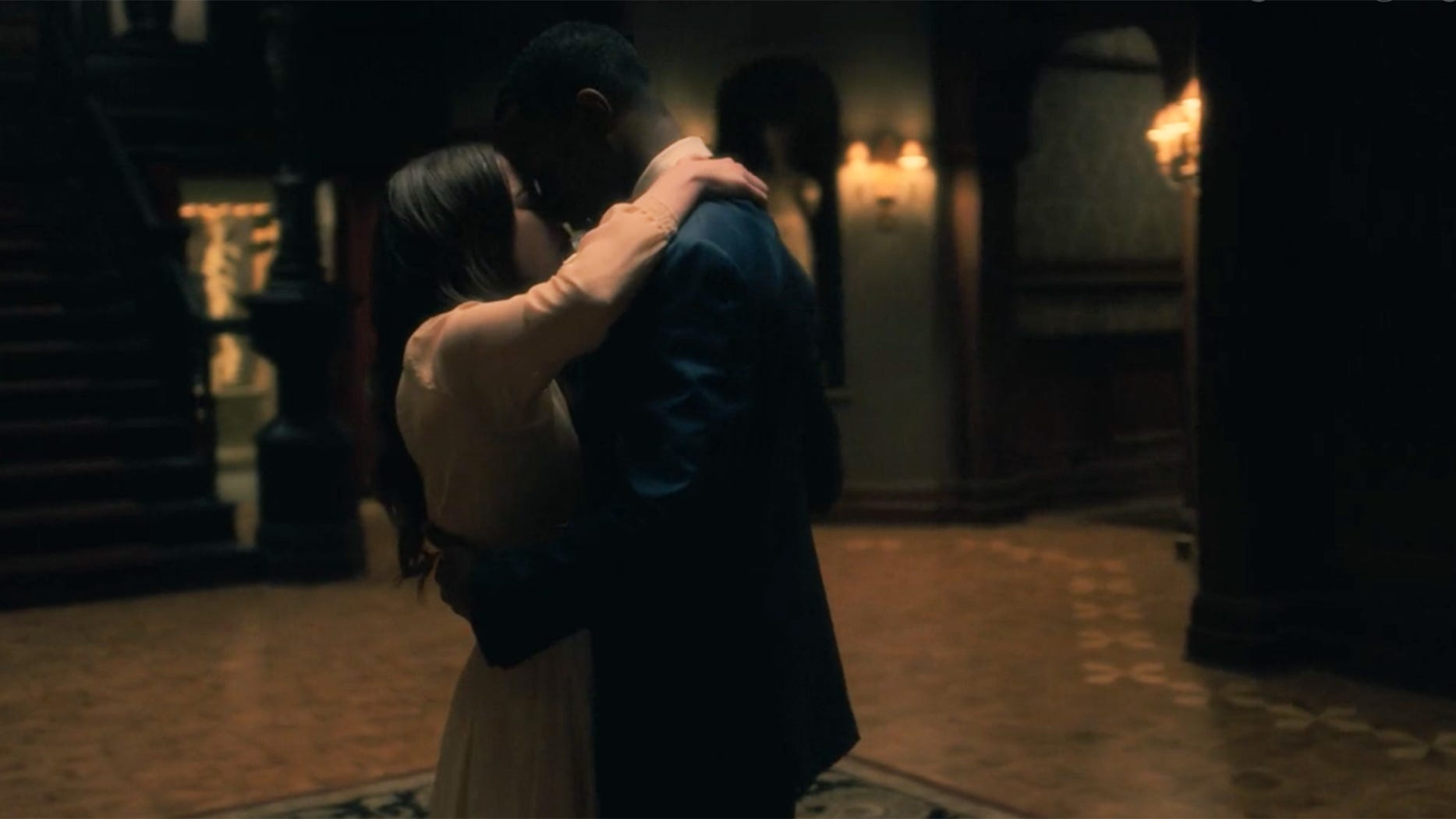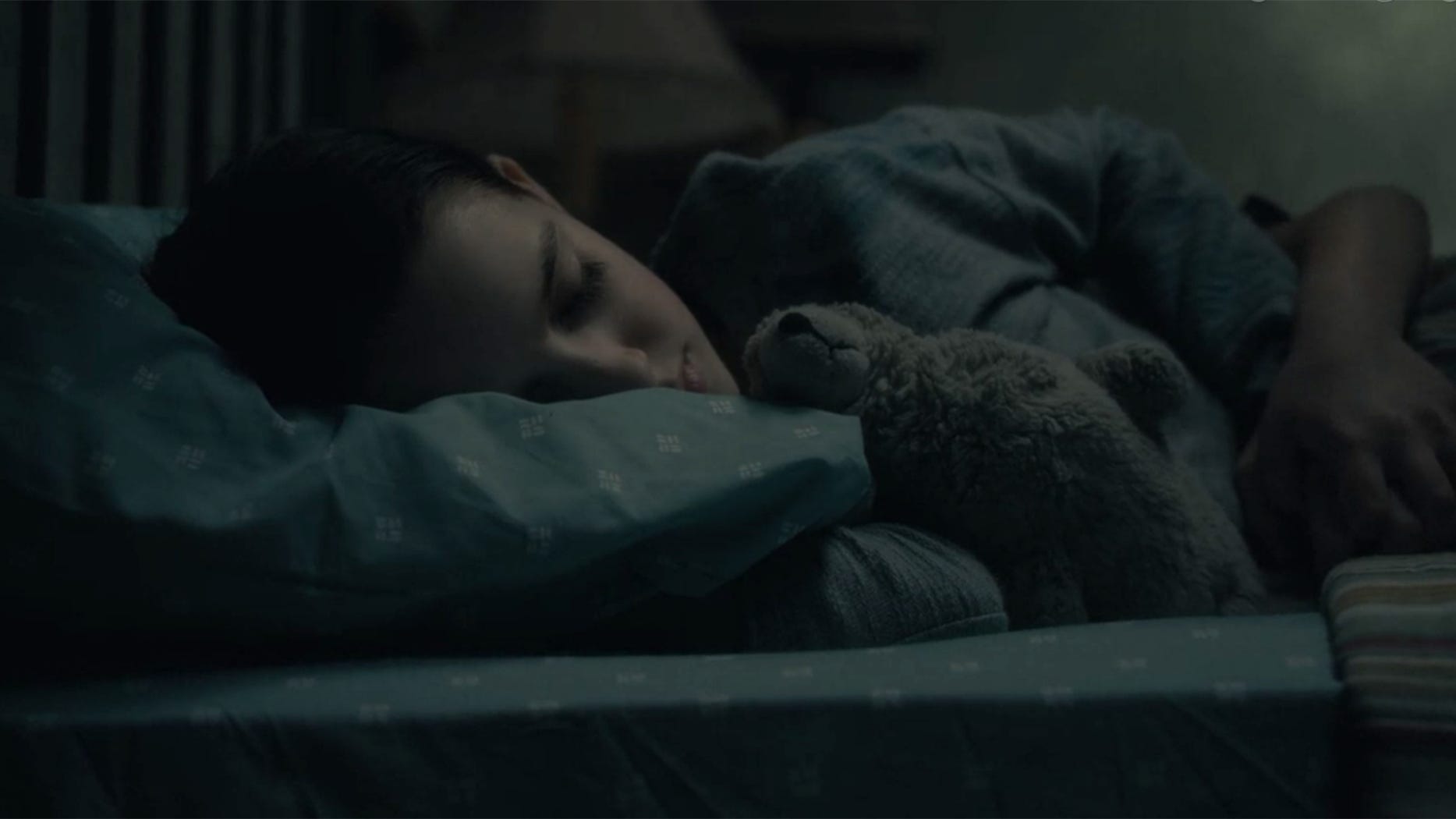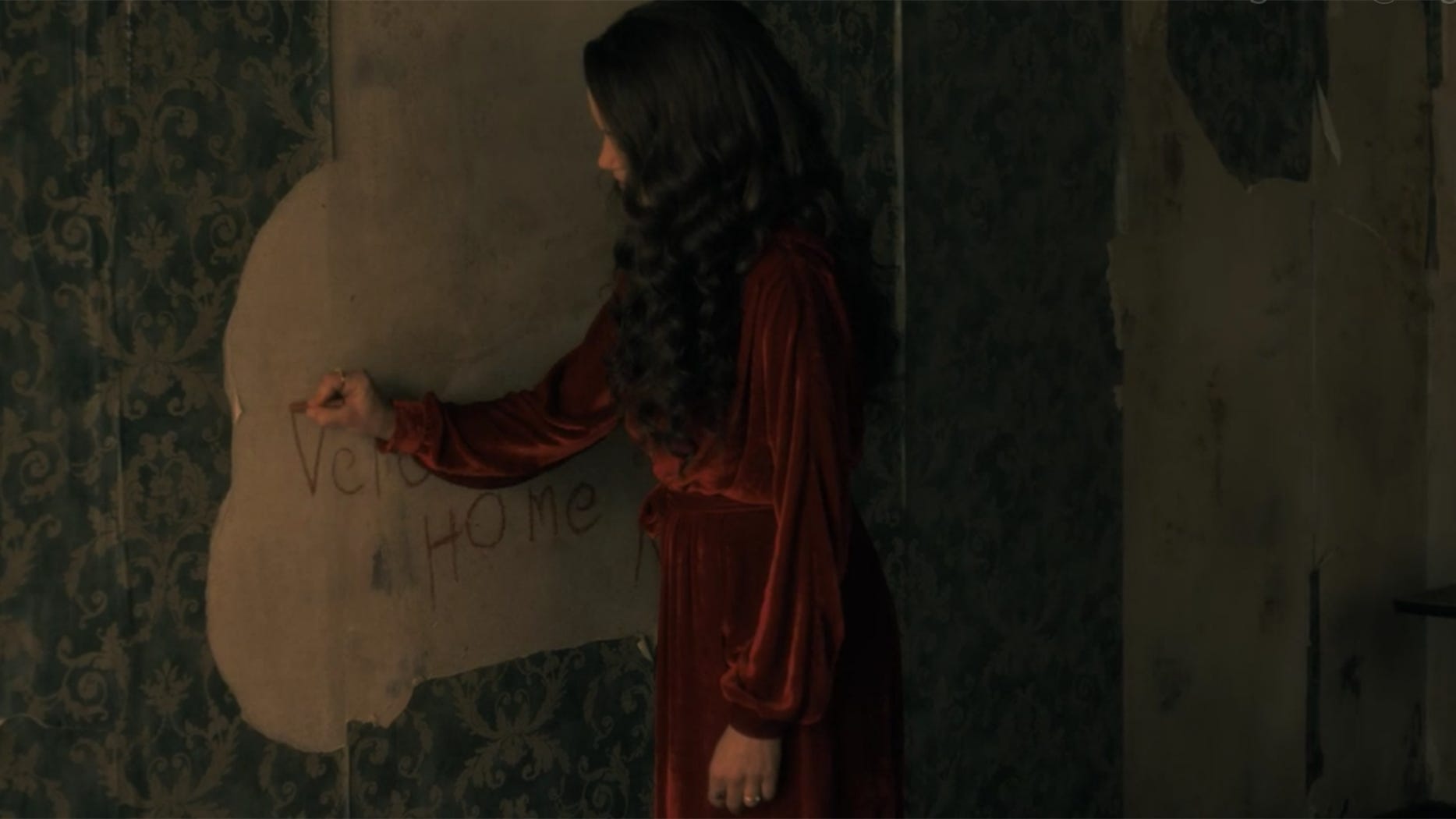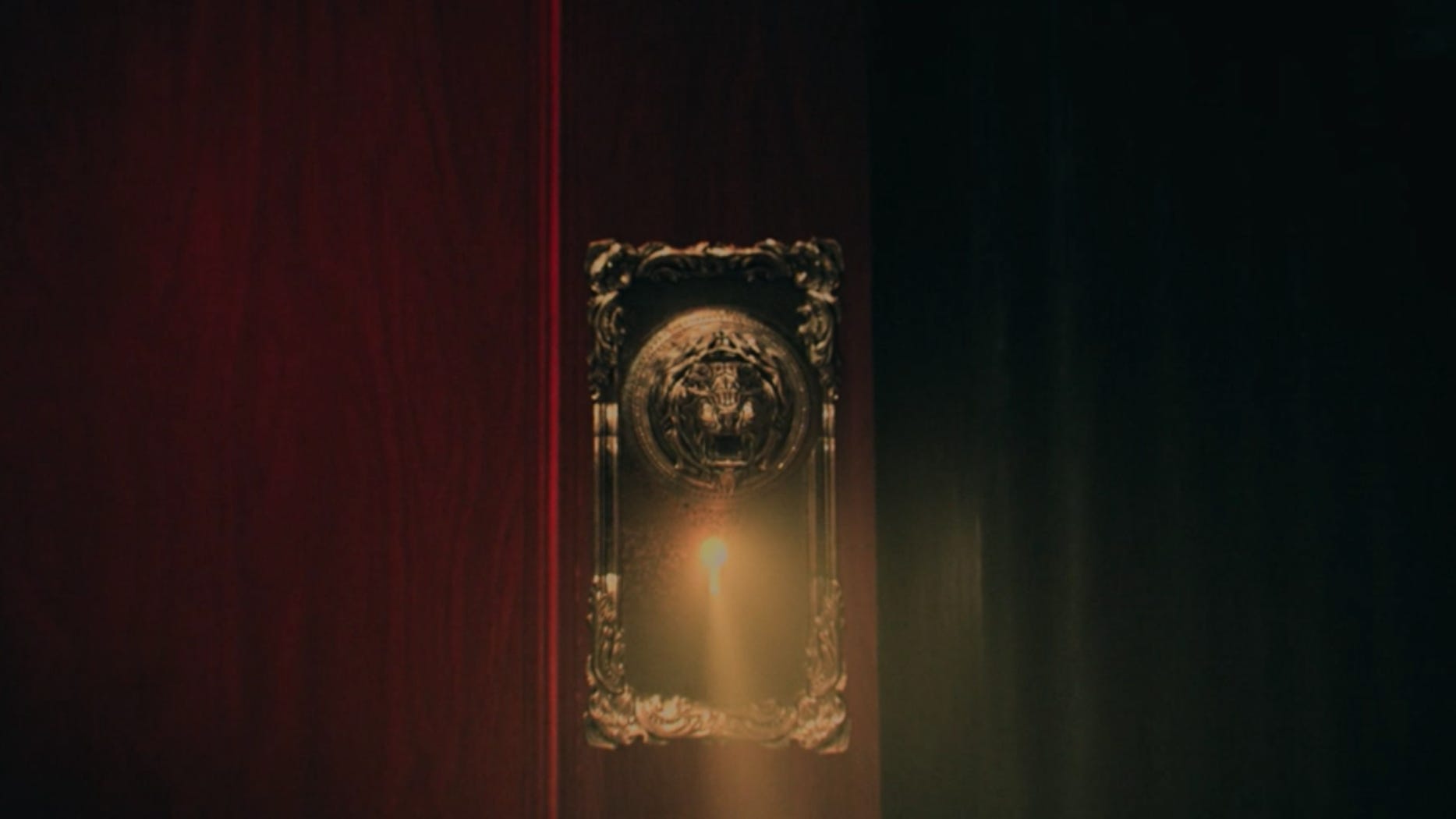Join or Sign In
Sign in to customize your TV listings
By joining TV Guide, you agree to our Terms of Use and acknowledge the data practices in our Privacy Policy.
The Haunting of Hill House: 17 Easter Eggs from the Book You Might Have Missed
How many did you catch?
[Warning: The following contains spoilers from the entire first season of The Haunting of Hill House. Read at your own risk.]
Netflix's The Haunting of Hill House is an excruciatingly good series whether you're familiar with Shirley Jackson's original novel of the same name or not. But while the series stands firmly on its own, that doesn't mean that creator and director Mike Flanagan didn't find inventive ways to pay homage to Jackson's seminal work in his modern take on the haunted house story.
There are Easter eggs book readers will find in each of the 10 terrifying episodes of the series, and we put on our detective's cap and set out to round up the best of them. This list doesn't even attempt to dig into all the other various Easter eggs and goodies sprinkled throughout Hill House -- including the hidden ghosts in so many of the scenes -- nor is it a definitive guide to all the myriad of ways in which Flanagan wove in references to Jackson's novel. To do so would involve poring over the series many, many times because of how intricately and subtly Flanagan often incorporates nods to Jackson's work into his own heartbreaking tale. But we rounded up 17 of them, so apologies in advance if your 18th favorite didn't make the cut.
1. Steven's voiceover. Let's just get the most obvious one out of the way here. If it's been a while since you read the novel, you might not have realized that Steven Crane's (Michiel Huisman) narration is taken straight from Jackson's powerful prose. Flanagan has a gift when it comes to repurposing Jackson's words to create equally impactful moments, such as taking Eleanor Vance's thoughts prior to her first suicide attempt in the novel ("I am home, I am home... now to climb") and recontextualized them as Steven first charging to save Luke (Oliver Jackson-Cohen) from the Red Room and later bracing himself to face his wife and let down his carefully constructed walls.
Of course, Flanagan also took things a step further than mere recontextualizing in the show's closing line. Although he kept the series bookended by the same description of Hill House that the book starts and ends with, Flanagan tweaked the original kicker ("whatever walked there, walked alone") to be reflective of the show's more optimistic ending ("those that walk there, walk together").
2. The cup of stars. In Episode 5, Nell (Violet McGraw) discovers Jacqueline Hill's teacup decorated with stars. Nell decides that she's only going to drink out of her cup of stars from then on out, but expresses doubts that she'll be allowed to since she's not supposed to have fragile things. However, Mrs. Dudley (Annabeth Gish) insists that that she uses her cup of stars and resists conforming to be like everyone else -- lines which originally were thought by Eleanor in the novel when she sees a young girl at a diner insolently refusing to drink milk without her cup of stars. In the novel, the moment reflects Eleanor's repressed rage at the claustrophobic expectations for women in the midcentury; in the series, it becomes more about Nell's and Mrs. Dudley's desire to capture the beauty of our own world in small, tangible ways.

3. Nell's final dance. When Nell (Victoria Pedretti) arrives at Hill House as an adult, she chases after her mother Olivia (Carla Gugino) and until the house is transformed into the night of her wedding where her now-dead husband Arthur (Jordane Christie) asks her to dance. Together, they waltz through Hill House, which is filled with light, joy and those she loves in Nell's mind, but in reality is cold, decrepit and abandoned by all life but for her.
Nell's dance through Hill House shortly before her death is reminiscent of one of Eleanor Vance's last moments in the novel as well. In the middle of the night, Eleanor wakes up and dances through the hallways, pounding on the doors as though she were the ghost. As she dances, she calls for her mother until she ultimately arrives at the library where she climbs the iron stairway with the delirious intention to jump. But before Eleanor can end her life, she's rescued by Luke. If only the same could have been said for poor Nell, who was pushed from the stairway by the ghost of her mother shortly after her own dance.
4. The incessant banging. Unlike in Flanagan's adaptation, we never actually see the ghosts haunting Hill House in Jackson's novel, nor is it even entirely clear how much the paranormal activity exists untethered to Nell or whether her repressed rage is, unwittingly, the main driving source. Either way, a good portion of the hauntings in Jackson's book take the form of terrifying and violent knocking on the residents' bedroom doors, something which is mimicked in the series. Flanagan even provides an explanation for the knocking, which is the sound Poppy's terminally ill son made to get her attention once he lost the ability to speak or walk.
5. Eleanor Vance and Dr. Montague. While nearly all the characters names are taken directly from the novel, there are some you might have missed, such as the fact that when Nell married Arthur she took his last name, Vance, bringing her one step closer to Jackson's original tragic heroine. Nell's doctor also gets his name from the novel, Dr. Montague, who was the one who foolishly invited Eleanor to Hill House in the novel and who, in the show, pushes her to return.
6. "In the night, in the dark." When young Steven (Paxton Singleton) asks Mrs. Dudley in the first episode about why the staff doesn't live on the grounds, she reveals that no one would live on the grounds or even come nearer to the house than town. "So yes, they lived all alone, in the night, in the dark," she says. Although the show's Dudley is shown to be a complex woman with her own desires and dreams, these lines were a wonderful nod to the book's more hardened Dudley, who gave each resident of Hill House the exact same spiel when they arrived about how no one could hear them if they needed help "in the night, in the dark."

7. The not-so-comforting hand hold. After a somewhat tense evening in the novel, Theo and Eleanor, who are sharing a room, find themselves victims of a haunting during which Eleanor comforts herself by grabbing Theo's hand. Only once the haunting subsides, Eleanor realizes it wasn't Theo's hand she was holding at all. This incident is mirrored in Episode 3 when Theo wakes up to what she believes in Nell getting in her bed after a nightmare and grabbing her hand. But when "Nell" begins squeezing too tight, Theo rolls over to discover there's no one in her bed at all. Although the roles may be reversed, the core dynamic between the two woman -- reaching out to the other for reassurance but grabbing the wrong thing, both metaphorically and in this case literally -- remains relatively the same.
8. The stone statues. Although the show's interpretation of Hill House is filled with eerie statues, in the book there was only one: a "huge and grotesque and whitely naked" family portrait of Hill House's builder and his two daughters. Dr. Montague muses in the book that it might have been a symbol of protection of the house, and as both the series and novel make clear, there is a fine line in Hill House between protection and destruction, so perhaps it was a symbol of both.
Here's All the Best Horror to Stream in October
9. The nursery. When Olivia first encountered Poppy Hill (Catherine Parker) in her reading room, aka the Red Room, Poppy mentioned that it had previously been a nursery. This understated nod was a reference to the so-called heart of the house in Jackson's novel, which was an old nursery that was the center of a supernatural cold spot. Of course, once Jackson's Eleanor surrendered herself to Hill House completely, the nursery's cold spot disappeared and the house suddenly felt "protected and warm," much like how the house lulled the Cranes into a false sense of security by transforming the Red Room to fit their needs.
10. The dog. The only paranormal activity in Jackson's novel that occurs without Eleanor being present is the mysterious dog that Dr. Montague and Luke chase. This encounter is echoed in Episode 6 when we flashback to the night of the storm when Nell goes missing, during which time Steven, Theo (McKenna Grace) and Shirley (Lulu Wilson) see a large dog running through the house.

11. "Welcome home Nell." One of the ways both the series and novel play with perception is through the same device of discovered writings on the walls. In Episode 5, Olivia reprimands Nell after she finds Nell's name written on the wall. It's only when Theo and Nell set about to clean up the chalk signature that Theo pulls back the peeling wallpaper to discover more writing hidden, reading, "Come home Nell." The third part of the reveal is saved for when Nell returns to Hill House as an adult when she finds her mother writing the message in question, which she can finally read in full: "Welcome home Nell."
This play with perception and the many ways to interpret the same information is taken directly from Jackson's novel in which first the words, "HELP ELEANOR COME COME" are found in chalk and then later, the phrase, "HELP ELEANOR COME HOME ELENOR" is written in blood. The phrases can be interpreted several different ways and it's precisely the messages ineffability that causes the most dread (and chaos).
12. The stone shower. The reason Dr. Montague invited Eleanor to Hill House in the novel was because of a paranormal event she was involved in as a child. One month after her father died when Eleanor was 12, a shower of stones fell upon her house for three days. The series transfers this incident to Olivia, who recounts the story to Mrs. Dudley in the penultimate episode. In the show's version of this tale, any uncertainty about whether or not our heroine was a bystander to this event or the cause of it is erased as it becomes excruciatingly clear that Olivia's violent grief was what caused the otherwise inexplicable turn of the weather. While the novel's Eleanor forgets the incident ever occurred, Olivia seems determined to convince herself that she played no role in it, calling her initial belief that she caused the stone showers "crazy," although it's clear she has her doubts.
13. The green room. In the novel, each of the bedrooms in Hill House has its own color palate. There's the blue room, the green room, the yellow room and the pink room. While the design of the house in the show isn't as overwhelmingly monochromatic as the book paints, there is a little nod to the themed bedrooms in Episode 9 when the series flashes back to the day the Cranes arrived. As the children rush up to find their bedrooms you can hear Steve shouting that Theo wants the green room, the same room she was assigned in the novel.

14. The lions. The doorknobs of Hill House are decorated with intricately carved lions' heads, a wonderful little nod to one of Eleanor's more memorable fantasies from the novel. As she drives toward Hill House, Eleanor passes a house with a pair of stone lions guarding the steps and imagines that she lives there, "dusting the lions each morning and patting their heads good night." She even thinks to herself, "People bowed to me on the streets of the town because everyone was very proud of my lions."
It's one of the first signs in the novel of Eleanor's tendency to escape from her life into her own fantasies, which alternate between her dreaming of a life in which she is celebrated by others or happily isolated from them. This dreaminess is what Hill House prays on, forcing Eleanor to confront the "absolute reality" that she will never live those lives or leave her past behind. And so to subtly incorporate the lions, which not only represent the desire to escape but the illusion of every being able to, into the house itself is a delightfully way to pay tribute to its origins.
Watch the Chilling Trailer for Netflix's The Haunting of Hill House
15. Olivia's robin. In another instance of bringing one of Eleanor's fantasies into the series to great effect, when Luke is in the Red Room with his mother, Olivia recalls a story from her childhood when she drove past a house adorned with flowers. Olivia says she imagined her whole life in the house, during which time people would come to have their fortunes told, she'd brew love potions for sad maidens and she'd have a robin -- a fantasy which, Oliva says, inspired her to nearly name Luke Robin. Much of Olivia's story is taken straight from the part of Jackson's book where Eleanor's driving to Hill House, imagining different lives for herself along the way. But whereas Eleanor's fantasies go largely unchallenged or untethered to any grounding context, Luke does everything he can to bring Olivia back to reality and accept that these fantasies aren't real life, that life isn't that perfect and that these imperfections are still preferable to death. Not that Olivia listens, of course.
16. "The Grattan Murders." In a moment of art imitating art imitating life, the chilling nursery rhyme Poppy recites to Hugh (Timothy Hutton) in the finale is the same little ditty that Jackson reportedly sang her own children to sleep with. "The Grattan Murders," which details the deaths of three generations of the titular family, also appeared in Jackson's novel -- albeit in a far less creepy context than as an actual lullaby or as something a ghost says to you before likely trying to kill you. In the novel, Eleanor is eavesdropping on Luke and Theo to find out what they truly think of her when Luke playfully sings it to Theo. They never do talk about her though.
17. "Journeys end in lovers meeting." It's hard to imagine a version of Hill House that doesn't include this famous phrase which Eleanor repeats to herself throughout the novel. Only in the book, it's clear that Eleanor's lover is the house itself, which is why she madly decides to end her life by driving her car into a tree rather than be forced to part from Hill House. In the series, though, the lovers in question are Olivia and Hugh, who once again come together in the finale when Hugh returns to save his children from the house... and from Olivia. But while there's a finality to the end of Eleanor's journey and the book itself, the series makes it clear that journeys don't really end, "not if you love someone," Olivia notes.
The Haunting of Hill House is available to stream on Netflix.
Craving more The Haunting of Hill House content? Check out our deep dive with creator Mike Flanagan into the show's polarizing ending. Of if you still have burning questions about the show as a whole, look no further than our explainer for the entire series. Or just watch the entire series all over again on Netflix. We won't blame you.
